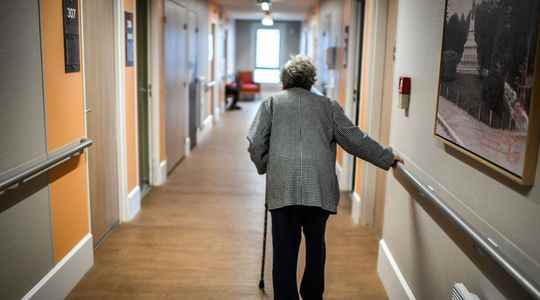The Covid-19 pandemic has branded the Old Continent with a red iron. Among the traces it has left, the drop in life expectancy unprecedented since the Second World War. This is shown by a study published Monday, October 17 in the journal Nature Human Behavior and taken up by our colleagues from World. The twenty-seven European countries – the work also takes into account the United States and Chile – see their life expectancy scrutinized by demographers from the Leverhulme Center for Population Sciences, in Oxford (United Kingdom), and from the Max-Planck Institute for Demographic Research, Rostock (Germany).
To view the graph, Click here.
The finding is as follows: in Europe, there is a divergence in the impacts of the pandemic on mortality in 2021. While countries located in the west of the continent have seen a rebound from the losses in life expectancy of 2020 , their eastern neighbors suffer a serious setback in terms of lifespan. First, Bulgaria shows a loss of 3.5 years of life expectancy over two years. Slovakia comes second, with a decline of 2.7 years. The United States also has one foot on the podium. A country heavily affected by the Covid-19 epidemic, the working classes have been less spared due to their distance from the very unequal health system. Result: – 2.4 years, according to the study.
But what exactly are we talking about? According to the INSEE definition, life expectancy at birth represents the average lifespan of a fictitious generation subject to the age-specific mortality conditions of the year in question. Note that the works published by Nature Human Behavior were carried out on the basis of all deaths occurring in a year, all causes combined; it therefore does not depend on the accuracy of the registration of deaths linked to Covid-19, these data may be imprecise and vary from one country to another. “Decreases in life expectancy are quickly followed by rebounds (…) However, the Covid-19 pandemic caused global and severe mortality shocks in 2020 and, as of spring 2022, it is still ongoing” , insist the researchers.
These conclusions are all the more worrying in that they contrast with our tendency to think that the increase in longevity is acquired in European or highly developed countries. In total, twelve countries saw a decline over two years in a row, in 2020 and 2021, while only eight observed a rebound in 2021. Among them: Sweden, Switzerland, France and Belgium. They managed to rebound from substantial losses in 2020 to pre-pandemic levels. If the French lost more than six months of life expectancy between 2019 and 2020, they regained five between 2020 and 2021. Result of the implementation of health restriction measures by the government and a healthcare system more accessible to all.
A correlation between vaccination and life expectancy
Unsurprisingly, the four Nordic neighbors are doing the best: Norway, Sweden, Finland and Denmark. Special mention to Norway, the only country going against the tide which has gained almost two months of life expectancy. The other three lost less than two weeks on average. In the soft underbelly of the ranking, we find Portugal, Italy and Spain (- 7 months), three States which found themselves swept away by several waves of the epidemic. The list is not exhaustive, since the authors of the study specify that they limited their research to countries with a reliable system of registration of vital statistics “which can give a biased impression of the global impact of COVID-19”.
Another important information: in 2021, the number of deaths due to the pandemic has shifted towards younger age groups. For example, while mortality in the United States for those 80 years and older returned to pre-pandemic levels in 2021, overall losses in life expectancy increased due to worsening mortality among people under 60. Life expectancy deficits during autumn-winter 2021 among people aged 60 and over were correlated with the vaccination measures taken in the countries. In other words, the countries whose population is the least protected are those where the deficits in life expectancy are the largest, the study argues.
In Bulgaria, only 30% of the population is fully vaccinated against Covid-19. And its neighbors in Eastern Europe are not doing much better: Romania has 41% of its population protected against Covid-19, compared to 47% for Slovakia and 57% for Poland. By way of comparison, Norway and Denmark have a vaccination rate of 73% and 81% respectively. “In Eastern countries, there is neither the same public health culture nor the same confidence in science as in Western Europe. This translates into a stronger reluctance to vaccinate, which implies that the immune brake against Covid-19 is very little activated”, reminded Professor Antoine Flahault to Releaseone year ago.
However, the low vaccination rate only accentuates the already existing divide between Eastern and Western Europe. Because of socio-economic differences and the gap between the different health care systems, the countries of Eastern Europe already recorded a significant gap on the question of life expectancy. In 2020, a Romanian man had a life expectancy of 71 years against 79 years for a French man. In addition to disparities between countries, the study also looked at gender differences. The results show that the gap has widened – with an advantage for women – in 16 of the 29 countries. The largest increase in the gender gap has been seen in the United States, where it has grown by nearly a year.
